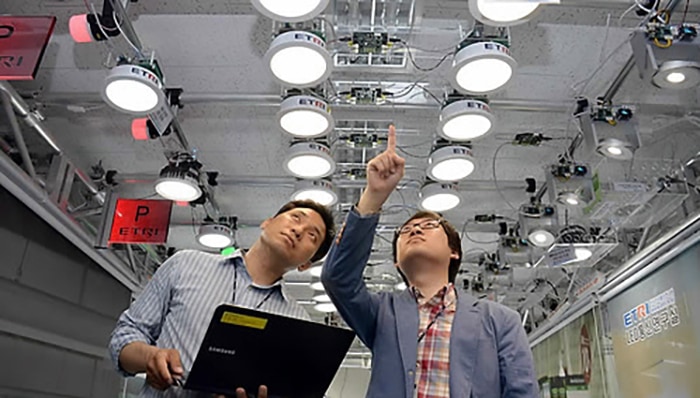These days, most people are preoccupied with maintaining a constant state of internet connection, expecting Wi-Fi in a moving subway car, a bustling cafe or a quiet library. However, wireless connection may not always be reliable, especially during periods when masses of people log in at the same time, not to mention the potential threat of hackers.
As a means to overcome the limitations of Wi-Fi, a new technology has arrived on the scene: Light Fidelity (Li-Fi), a form of visible light communication (VLC) that offers high-speed wireless communication. The term Li-Fi was coined by Harald Haas, a professor at the University of Edinburgh, during his TED Global Talk where he introduced the idea of “wireless data from every light.”
Li-Fi uses light from light-emitting diodes (LEDs) as a medium to deliver networked, mobile, high-speed communication in a similar way to Wi-Fi. It works by switching the current leading to the LEDs on and off at a very high rate, faster than can be noticed by the human eye. As Li-Fi uses LEDs that are already turned on, it uses very little energy. Since it uses visible light, it has a spectrum 10,000 times larger than the entire radio frequency spectrum, used by the Wi-Fi system. The current Li-Fi system can transfer data at 224GB per second, which means you could potentially download 18 movies, each 1.5GB, in one second. Moreover, Li-Fi can be used in aircraft cabins, hospitals and nuclear power plants without causing electromagnetic interference.
Korea, along with other countries, has been getting ready to make the transition over to Li-Fi technology.
The Korean Intellectual Property Office (KIPO) announced on Nov. 21 that the number of Korean patents related to Li-Ffi technology has shown a steady increase over the past decade. From 2004 to 2015, a total of 437 patents were registered by research bodies in both the private and public sectors. Starting with two patents in 2004, the number rose to 11 in 2006, and increased to 40 patents in 2009 and 67 in 2010. Around 30 new patents are have been registered each year since.

Researchers test the strength of the wireless Li-Fi network, which uses light from light-emitting diodes (LEDs), set up at the Electronics and Telecommunications Research Institute.
An analysis of the total pool of Li-Fi related patents between 2004 and 2015 showed that around 37 percent of the patents were registered by conglomerates. Universities were right behind them at 25 percent, while foreign enterprises and local SMEs were at 13 and 12 percent, respectively. Samsung Electronics, with 111 patent applications, came in at number one, followed by the Electronics and Telecommunications Research Institute (ETRI) with 41 patents, and Kookmin University’s Industry-Academic Cooperation Foundation with 24 patents. Qualcomm, a U.S. semiconductor and telecommunications company, was in fifth place with 16 patents.
A representative from KIPO said, “Through the hard work and effort put in by various government bodies, the distribution rate for LED lights has been on a steady incline. The foundation for a Li-Fi network is being built before us. New innovations, such as big data and the Internet of Things (IoT), need high-speed, high-rate communications technology to function. Now is the time to expand our research into Li-Fi, paying close attention to related patents and other technologies.”
By Lee Hana
Korea.net Staff Writer
Photo: ETRI
hlee10@korea.kr























